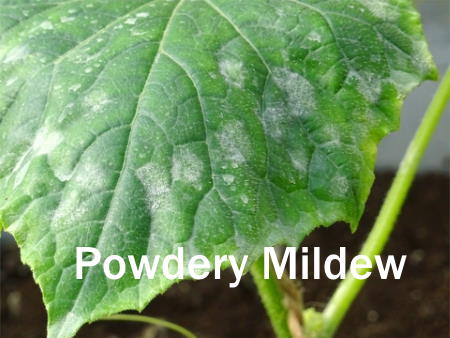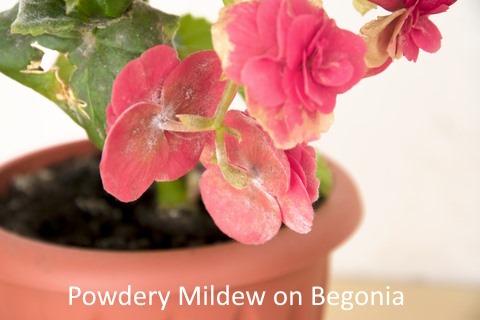Powdery Mildew on House Plants
Find out how to identify powdery mildew on house plants. You'll also discover how this fungus develops, how to prevent it, and get solutions to safely treat powdery mildew indoors.
How to Identify Powdery Mildew Disease
It's a fungus that looks like white powdery patches on leaves, stems, or flowers that later turns grayish brown.
The powdery patches are fungal spores and they multiply rapidly. You'll usually notice the mildew first on the top surface of older leaves. By this time, the disease has been inside the plant a week or longer. The affected leaves may turn yellow or brown, become distorted, and eventually fall off.
Powdery mildew has favorable conditions:
- High humidity
- Low light
- Poor air circulation
- Dry soil
Some houseplants are subject to fungus diseases because of their soft foliage, as well as their preferred growing conditions.
African violets, begonias, and ivy are often susceptible because they prefer the high humidity that is ideal for fungal growth.
 Dry, white powdery patches on leaves are a symptom of powdery mildew.
Dry, white powdery patches on leaves are a symptom of powdery mildew.Disclosure: Guide-to-Houseplants.com participates in affiliate programs. If you make a purchase after following the links on this page, I may receive a commission at no additional cost to you.
Treatment for Powdery Mildew
The easiest way to control the spread of this fungus is to cut off all the affected leaves and give the plant more light.
Move the plant away from other plants to improve air circulation and to prevent the spread of fungal spores.
You've probably heard of using baking soda as a treatment. This works well for prevention, but does not cure an affected plant. If you want to try this solution as a preventative measure, spray the plant with a mixture of 1 tablespoon of baking soda dissolved in 1 gallon of water.
Spray the affected areas with fungicide made for house plants. This Safer Brand 3-in-1 Ready-to-Use Insecticide/Fungicide/Miticide works to control powdery mildew and other types of fungus and insects. Read the label carefully and follow the manufacturer's directions for use.
 Begonia houseplant covered with powdery mildew. Image ©Anna Rudenko | Dreamstime
Begonia houseplant covered with powdery mildew. Image ©Anna Rudenko | DreamstimeHow to Prevent Powdery Mildew on Houseplants
- Keep it clean. Fungal spores can easily be carried on your hands and tools from one plant to another. It's a good idea to wash your hands and sterilize your tools after contact with affected plants to avoid spreading the fungus around.
- Water your house plants regularly. Plants are most affected by this disease when roots dry out and foliage is moist.
- Give them air. Although tropical houseplants need humidity to thrive, some need more air circulation than others. Plants that are epiphytes in the wild (they grow on trees), such as bromeliads, tillandsias, and most orchids, are healthier with good air flow. And as I mentioned before, thickly leafed African violets and begonias are also susceptible to fungus. A low-speed fan can help, if powdery mildew becomes a problem.


